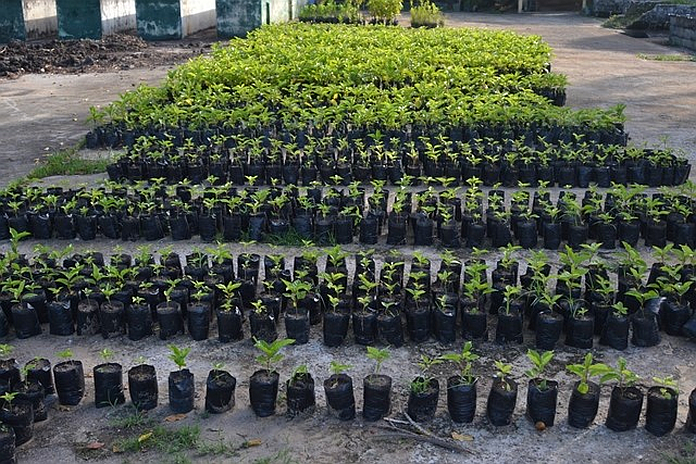By Mikaila Prince
GEORGETOWN, Guyana, (DPI) – Guyana’s agriculture contributes hundreds of millions of dollars annually to Guyana’s economy. This industry, with subsectors of aquaculture, farming, sugar and rice production, employs over 17 percent of Guyana’s workforce. However, this South American nation’s agriculture sector is at risk of collapsing due to the erratic climate changes.
Against this backdrop, the government, by way of its new and expanded Low Carbon Development Strategy (LCDS) 2030, seeks to sustainably manage Guyana’s agriculture sector by building climate-resilient agriculture systems.
This national strategy will achieve this by strengthening institutions such as the National Drainage and Irrigation Authority (NDIA), Sea Defence Board, Hydrometrology Department, and others; improving flood control and water management; strengthening river and sea defence systems; addressing drought prevention, including in the hinterland regions; improving the response to climate-related events and implementing smart initiatives.
In its history, Guyana has suffered from two major floods – the 2005 and more recently, the 2021 flood. While both of these natural disasters caused damages ranking in the millions of dollars, resulting in our gross domestic product taking a hit, the 2021 flood is unique in that for the first time ever, Guyana’s hinterland region also suffered significantly.
For context, the 2005 floods resulted in damages to the agricultural sector amounting to US$52.6 million. The sub-sector hardest hit were sugar, US$11.2 million; and rice, US$8.1 million. Non-traditional Agricultural Commodities sustained damages of US$28.8 million and livestock, US$2.9 million.
With overall costs of US$29 million and US$14.7 million respectively, the droughts of 1997 and 2010 resulted in damages to the rice and sugar industries resulting in losses in export earnings to the country and income for many households. More than 1,500 Amerindian families in Southern Guyana reliant on agriculture were affected and several rice farmers were forced to leave 35% of their rice fields uncultivated. Losses to the other subsectors of livestock and non-traditional agricultural commodities were numerous.
With the 2021 floods, however, over 74,000 acres (43,473 acres of cash crops and 30,684 acres of rice) of farmlands and over 20,000 farmers were affected. An assessment of the total damages is estimated in the hundreds of millions of dollars. The farmers that were affected – small scale or otherwise – were given grants by the government to help them get back on their feet. Billions have been distributed to farmers as part of this relief programme.
When it comes to water use in Guyana’s agriculture sector, LCDS 2030 will give greater consideration to:
- The establishment of water storage facilities for agriculture and domestic use during times of scarcity;
- The need for the increased role of communities’ drainage and irrigation systems;
- Supporting and encouraging farmers to maintain and operate drainage and irrigation systems, among other objectives.
LCDS 2030 recognises the important role resilient agriculture systems play in achieving food security in the Caribbean Community (CARICOM). Food security is a major priority of the Government of Guyana, one which seeks to reduce the region’s food import bill by producing more.





